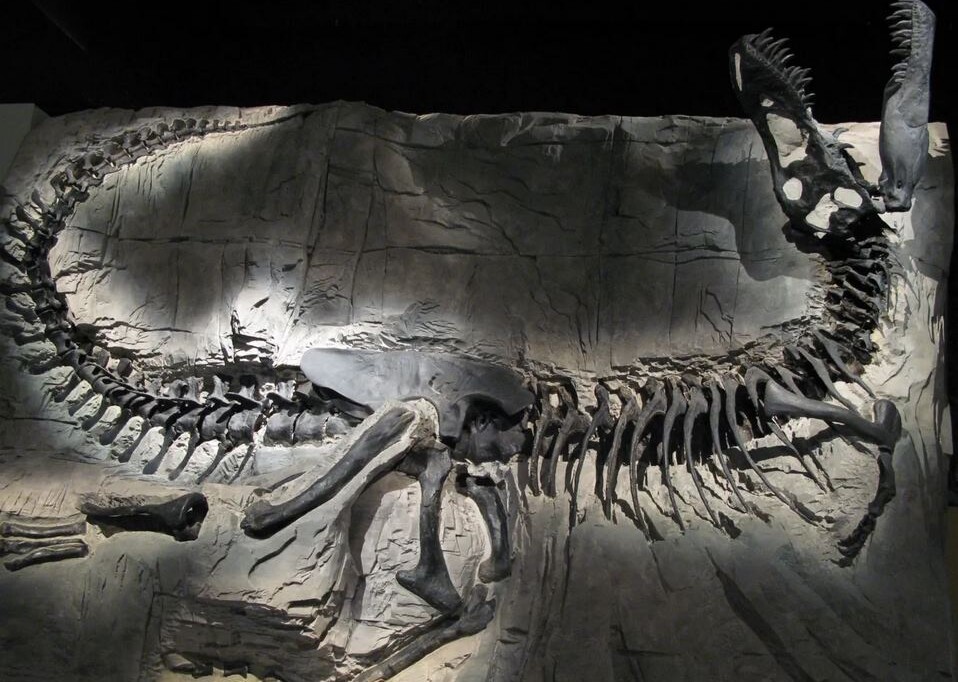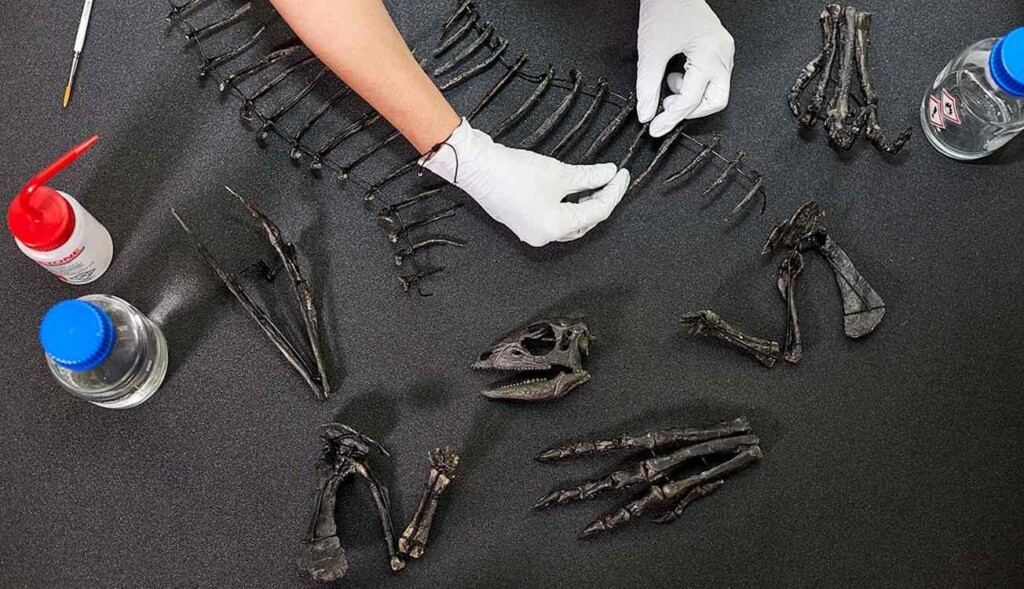 credit – provided to the BBC by Darla Zelenitsky
credit – provided to the BBC by Darla ZelenitskyPaleontology may be entering another great era of discovery: characterized by serial misidentification in decades past.
For an example one need look no further than the newly-dubbed “Dragon Prince of Mongolia,” a small tyrannosaurid from the earlier days of the lineage’s evolution.
It had been sitting in the drawers of the Mongolian Academy of Sciences since the 1970s, having been labeled an Alectrosaurus.
University of Calgary Professor Darla Zelenitsky, the lead author of the paper describing the new animal, foresees many new discoveries coming out of museum collections in the same manner.
“It is quite possible that discoveries like this are sitting in other museums that just have not been recognized,” Zelenitsky said in an interview with AFP.
It was Ph.D. student Jared Voris who first recognized something was wrong with the labeling when he found the two partially-complete fossil skeletons in the drawers.
The new species has been named Khankhuuluu mongoliensis, or Dragon Prince of Mongolia. It is a “prince” rather than a “rex” (king) because of its smaller, fleet-footed build. Weighing around the same as a show jumping horse, the animal represents not only an earlier stage of Tyrannosaurid evolution, but also a diversification in the lineage that reflects the connectivity between North America and Eurasia at the time the animal lived.
About one-eighth the size of Tyrannosaurus rex, K. mongoliensis lived 86 million years ago under the shadows of larger predatory therapods.
Described by Professor Zelenitsky as “really messy,” the understood history of T. rex was muddled by missing links between Asia and North America. In their study presenting K. mongoliensis, the authors use it as a link to explain how Tyrannosaurids evolved across the two continents.
By the time of the Cretaceous period, the Earth’s continents largely resembled those we know of today. Then as now, a land bridge connects Asia and North America via the Bering Strait, and an early group of Tyrannosaurids migrated across to North America and began to diversify.
This would have either been K. mongoliensis or another, unknown relative. Following the diversification, a population then crossed back into Asia which led to two subgroups of Tyrannosaurids, one that was very large and contained individuals like Tarbosaurus bataar, also found in Mongolia; and another one that was much smaller and contained members like “Pinocchio rex,” which was around the same size as K. mongoliensis.
One member of the large group then crossed over the North America again, and by 66 million years ago had become Tyrannosaurus rex, one of the largest predatory land animals to ever live.
 The enigmacursor skeleton being cleaned – credit, the Trustees of the London Natural History Museum, released.
The enigmacursor skeleton being cleaned – credit, the Trustees of the London Natural History Museum, released.More mislabeling
On June 25th, just a week after the paper announcing the K. mongoliensis discovery, the Natural History Museum of London released a statement explaining that a new species of ‘mystery’ dinosaur that used to dash along North American riverbanks, had been identified after the museum bought a fossilized specimen.
Following years of study beginning in 2021, the skeleton that had been bought as a Nanosaurus was actually found to be nothing of the sort. After careful examination, it has been renamed Enigmacursor, for “mystery runner.”
It had been found on private land and put up for auction as a Nanosaurus, basically a species that was first found in 1877, never well-documented, and which acted like a “wastebin taxon.” A wastebin taxon in biology refers to a genus or subfamily into which lazy or perplexed biologists in the past have placed species they weren’t able to properly identify.
The name “Nanosaurus” or ‘tiny lizard,’ is the sort of broad description that lends itself to that practice.
“It just goes to show how much paleontology has changed in the past 150 years,” said Professor Susannah Maidment who co-led the examination into Enigmacursor. “When Nanosaurus was named in 1877, there weren’t that many named dinosaurs so the few characteristics that its fossils preserved would have been unique.”
“Now, however, we have found hundreds of small dinosaurs from all over the world and know that the fossils of Nanosaurus just aren’t that useful, let alone enough to name a species with. As a result, it made sense to put them to one side and name Enigmacursor as a new species instead.”
Living on floodplains and sandy riverbanks during the Late Jurassic, between 152 and 145 million years ago, Enigmacursor relied on its speed to avoid larger predators and to catch food. It was given the species name mollyborthwickae in honor of the woman whose donation allowed the museum to purchase it.
SHARE This Double Dinosaur Surprise With Your Friends On Social Media…
Source link

